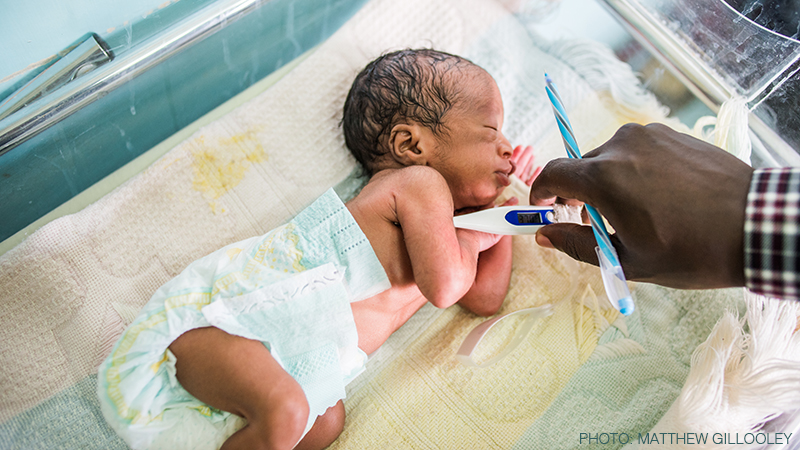UCSF researchers have developed a blood test that can predict a mother’s risk of spontaneous preterm birth (before 37 weeks of gestation), offering hope of delaying early delivery for millions of women and babies.
 The study’s principle investigator, Laura Jelliffe-Pawlowski, PhD, associate professor of epidemiology and biostatistics at UCSF and associate director of precision health with the UCSF California Preterm Birth Initiative, presented final results of her research on the blood test on March 18 at the annual meeting of the Society of Reproductive Investigation in Orlando, Florida. Her presentation confirmed preliminary results, which she presented in South Africa, London, and at UCSF World Prematurity Day events at UCSF last fall.
The study’s principle investigator, Laura Jelliffe-Pawlowski, PhD, associate professor of epidemiology and biostatistics at UCSF and associate director of precision health with the UCSF California Preterm Birth Initiative, presented final results of her research on the blood test on March 18 at the annual meeting of the Society of Reproductive Investigation in Orlando, Florida. Her presentation confirmed preliminary results, which she presented in South Africa, London, and at UCSF World Prematurity Day events at UCSF last fall.
The blood test, which can be used as early as 15 weeks into a pregnancy, is able to identify approximately 80 percent of women who will go on to have a spontaneous preterm birth, offering the promise of early identification of high-risk women and eventually, intervention early in pregnancy.
The test not only predicts overall risk, but also suggests the specific drivers of that risk, such as the health of the placenta, diabetes, obesity or infection, using information from markers in the blood related to placental, lipid, immune, and hormone function.
Each year across the world, approximately 15 million babies are born preterm. Preterm birth can be devastating to children and families. Preterm infants are more likely to die within the first month of life. Those that live often go on to have neurological issues and health complications including developmental delays, asthma, diabetes, and heart disease.
“Having a test available early in pregnancy offers the potential for clinicians and researchers to focus more intently on women at the highest risk and partner with them to help reduce their likelihood of a preterm delivery,” said Jelliffe-Pawlowski. “We have designed the test to make use of markers that can be measured in the blood at relatively low cost to help increase the likelihood that it may become widely available both in the United States and worldwide.“
Because of the anticipated relatively low cost, the test could have substantial impact in low-resource settings, she said. “In many low-income countries, women may see a healthcare provider only once or twice during her pregnancy. Providers can use the test to identify women at high risk for preterm birth, and use that information for resource and treatment planning.”
In the U.S., the test may be able to help providers gain a better understanding of what increases the risk of preterm birth and focus treatment interventions more precisely.
The next step is to more broadly validate the test and to find business and other partners to help develop a low-cost test for distribution.
Jelliffe-Pawlowski’s research collaborators include co-principle investigator Dr. Kelli Ryckman at the University of Iowa; Bruce Bedell, University of Iowa; Rebecca Baer, University of California, San Diego; Drs. Gary Shaw and David Stevenson, Stanford University; and Drs. Larry Rand and Mary Norton at UCSF.